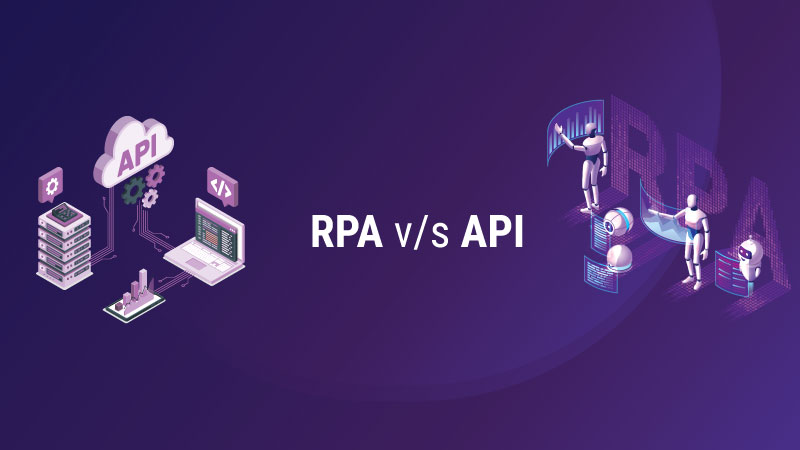RPA vs. API: What Are Their Differences?
Implementing RPA in a business helps in gaining efficiency in business practices and processes. This helps in improving productivity without increasing the cost of performing business operations. In addition, RPA technology consists of bots that don’t make errors like humans. RPA comes with an audit trail which allows businesses to see what they are doing. Furthermore, it enhances the agility of an organization and allows it to accommodate business process changes. Using RPA helps a business make rapid adjustments to processes, enhancing its agility. To further know about these features, one can visit RPA Online Training.
Significant Features of RPA:
- Better Employee Power – With this technology, a business can allow its employees to shift their focus to high-value tasks. This approach helps a business in its revenue growth and employee satisfaction.
- Improves Employee Engagement – With RPA bots, businesses can automate repetitive tasks in a business. This allows human employees to focus their efforts on something that requires human intelligence and thinking.
- Enhances Customer Satisfaction – RPA technology also helps in improving customer satisfaction by automating business processes. Automating repetitive business tasks allows a company to create faster and better experiences for customers.
- Optimum Performance – RPA provides a huge library of reusable business components. Furthermore, it deploys robots in dozens which helps in eliminating runtime updates and central server synchronization issues.
- Security & Governance – This technology consists of action-specific permission on the basis of the role of each team member. Furthermore, it comes with various encryption capabilities that will help in avoiding malicious tampering.
Significant Features of API
APIs are the building blocks of digital products and using them helps in simplifying application development. These are a set of functions that show how services interact with each other and the broader ecosystem. In addition, they help in closing the bridge between applications and allow systems to talk to each other. They are a core component of today’s application development and they make up more than 80% of all internet traffic around the world. Given below are some of the significant features of API.
- Increases Business Agility – API extracts the complex nature of service and gives organizations safe and secure access to data and services. Furthermore, this approach helps drive innovation for internal partners and third-party consumers.
- Improve Productivity – Well-built APIs can help a business become more productive and efficient. This allows companies to reuse an existing API instead of building a new code from scratch each time.
- Language Independent – It has a language-independent nature that ensures rapid development and deployment of applications. Furthermore, APIs are useful in leveraging a vast range of third-party services and data sources.
- API Security – API developers need to ensure security by using web application firewalls. Furthermore, they also need to secure API gateways, input validation, and user authentication to introduce security in API.
- API Gateways – These are highly specific software tools useful for adding incoming API requests. Moreover, they include various functions like authentication, routing, rate-limiting, billing, and monitoring.
Difference Between RPA & API
RPA and API both are very different terms and they have been developed for different tasks. The primary objective of RPA is to automate the manual tasks. This helps companies save their time and focus on more intelligent-centric work. Automating RPA in a business requires you to understand your processes work. After that, you must choose an RPA partner and augment your RPA bot with AI technologies. After enrolling in RPA Training in Noida you will how to implement it in business. Furthermore, you need to test your RPA bot and maintain your automated workflow.
On the other hand, API facilitates the exchange of information exchange between two applications and makes transactions much more secure. Implementing API in a business requires 5 significant steps which are planning, developing, testing, deploying, and maintaining. Completing these 5 steps will result in smoother transactions and improved customer interactions.
Conclusion
Implementing RPA in a business helps in gaining efficiency in business practices and processes. Furthermore, it enhances the agility of an organization and allows it to accommodate business process changes. With this technology, a business can allow its employees to shift their focus to high-value tasks. This approach helps a business in its revenue growth and employee satisfaction. With RPA bots, businesses can automate repetitive tasks in a business. This allows human employees to focus their efforts on something that requires human intelligence and thinking. RPA technology also helps in improving customer satisfaction by automating business processes. APIs are the building blocks of digital products and using them helps in simplifying application development. In addition, they help in closing the bridge between applications and allow systems to talk to each other. Increases API extracts the complex nature of service and gives organizations safe and secure access to data and services. Well-built APIs can help a business become more productive and efficient. This allows companies to reuse an existing API instead of building a new code from scratch each time.

